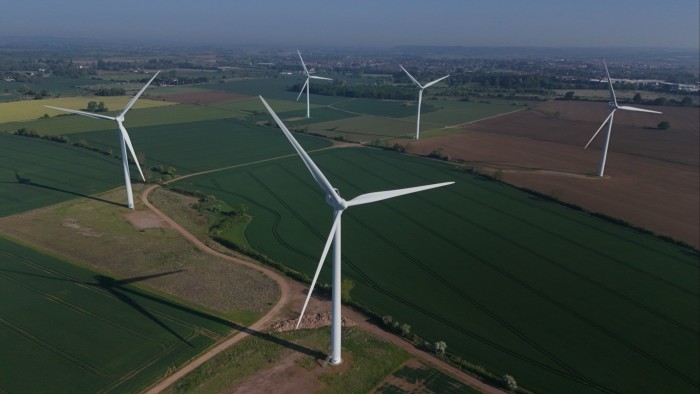Stay informed with free updates
Simply sign up to the Climate change myFT Digest — delivered directly to your inbox.
The writer was chair of the economic affairs committee of the House of Lords in the last parliament
Irrational, unrealistic, unworkable: some of the words Tony Blair used last week to describe governments’ approach to climate change. Arguing that the strategy should be more pragmatic, the former UK prime minister called for “solutions that match the scale of the challenge and a new politics to get them done”.
For governments across western Europe, climate change is just one of three existential challenges — the other two being lack of competitiveness and growth, and Vladimir Putin’s threat to peace. But time and money are finite. Governments must prioritise. So which of these is the most important?
Growth must come first. Without it, Europe will not have the resources either to defend itself or to decarbonise its economies — and the sums involved will be huge. The EU’s ReArm Plan aims to mobilise €800bn in spending between now and 2030; other estimates suggest European defence spending might need to rise by €250bn a year. An additional €477bn is required each year, over the same period, to reach the EU’s climate target.
Security must come next, and not just for the obvious reason that the bedrock of growth is peace and stability. A wider European war would destroy innovation and capital, the engines of decarbonisation. So nations need to recalibrate their analysis of risk.
Rapid rearmament and strengthening national security is a whole-economy effort. It requires almost every area of human endeavour — manpower, food, logistics, infrastructure — to play its part. For that to happen, governments in London, Paris, Berlin and right across Europe need to change their mindset and modus operandi.
Officialdom has been shaped by an era of globalisation and peace, in which the EU could shelter under the US’s protective shield. Global institutions forged climate agreements. Regulators were tasked with tackling climate change. Interest rates at record lows — fuelled by quantitative easing — helped finance green projects.
That world has gone. Yet the processes it created live on, spawning climate regulations and policies that jar with today’s fiscal realities and grate with politicians’ talk of the need for “urgent action” on defence.
So to generate growth in order to re-arm quickly, government agendas need to be refocused and trade-offs confronted. Energy is top of the list. The climate and defence agendas are, in one way, aligned here: investing in renewables improves energy security. Increasing energy supply from new sources is necessary not just for rearmament but also to power digitalisation and AI, which is vital for defence.
Yet a tension exists. Building wind and solar farms, not to mention nuclear power stations, takes time. The sun does not always shine, the wind does not always blow. So in the short term, if Europe needs more reliable, affordable energy to power rearmament then gas will remain key. Are governments — and electorates — prepared to see emissions rise as energy-intensive factories ramp up rearmament?
Next, regulatory frameworks must be reviewed to ensure that they do not undermine investment in defence. Politicians should look at regulators’ remits and ask if they strike the right balance between growth, security and climate.
And finally, finance. Should nations prioritise defence over green incentives? Which will do more to deter Putin in the next few years: more electric vehicles, or more drones?
On defence and decarbonisation, Europe is in a race against time. Recognising the need to prioritise security over climate in the near term is not to deny the existential threat. It is to understand that without peace, Europe’s green transition is impossible. Growth and security must come first. Confronting this hard choice is something Europe’s leaders can no longer ignore.
